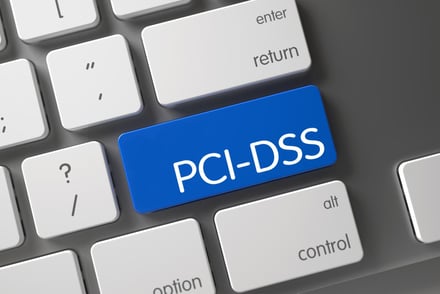The PCI-DSS (Payment Card Industry Data Security Standard) is a set of industry-recommended requirements for business organizations that store, process, or transmit payment card details that aim to protect payment card data from theft, misuse, and other forms of breach.
File Integrity Monitoring (FIM) is necessary to meet some of the PCI-DSS's core requirements. If you’re looking for an FIM solution to help you meet PCI-DSS requirements, this blog post is for you!
By the time you finish reading this post, you will have a solid grasp of the following:
- Why file integrity monitoring should be a critical component of any information security program
- The specific file integrity monitoring requirements to comply with PCI-DSS
- What to look for in a file integrity monitoring tool to meet PCI-DSS requirements
Let’s get started.
File Integrity Monitoring (FIM) At A Glance
A file integrity monitoring solution helps ensure that a file for an application, device, server, or other element in the enterprise IT infrastructure remains stable and can carry out its usual functions despite the barrage of possible changes it can experience.
Take, for instance, how incorrectly assigning the wrong IP address at startup can prove detrimental to a network. Or how a single line item in a 100-line script can make an entire operating system go haywire. These are examples of the “changes” that a FIM tool can detect and monitor.
Organizations need to rely on a file integrity monitoring tool to beef up data protection and meet compliance requirements.
Breach Over Troubled Water
So, you think you don’t need a robust file integrity monitoring tool because your information security measures are already top-notch?
We urge you to reconsider.
The 2023 Data Breach Investigations Report revealed Point of Sale (POS) intrusions and payment card data as some of the most common data types breached in 2023, accounting for 37% of breaches in the retail industry and was the primary target 41% of the time for restaurants. In addition to common threats like ransomware and basic web application attacks, a large portion of these attacks involved direct social engineering of employees who were tricked into providing credentials and personal data via email.
For this reason, relying on a file integrity monitoring tool that can only recognize whether or not the integrity of a file has been compromised is not enough. You also need a tool that will alert you of the change and immediately take action to remediate the change.
In a nutshell, a robust FIM tool can:
- capture the initial state (baseline) of every monitored file and store it in the database
- scan for changes relative to the baseline
- determine if the configuration change is planned or unplanned
- instantly alert you when an unexpected change occurs
- provide information on how to remediate changes
- quickly roll back to a previously good state
Now, let's proceed to the compliance part.
File Integrity Monitoring Requirements for PCI-DSS v4.0 Compliance
The goal of compliance is to reduce data breach risk and also functions as another reason for you to get serious with file integrity monitoring. The PCI-DSS 4.0 compliance standard, comprised of 12 core security areas to protect cardholder data, is one of these.
In terms of file integrity monitoring, the PCI-DSS specifies the following requirements:
PCI 10.3.4:
“File integrity monitoring or change-detection mechanisms is used on audit logs to ensure that existing log data cannot be changed without generating alerts.”
PCI 11.5.2:
“A change-detection mechanism (for example, file integrity monitoring tools) is deployed as follows:
- To alert personnel to unauthorized modification (including changes, additions, and deletions) of critical files.
- To perform critical file comparisons at least once weekly.”
PCI 10.3.4 and PCI 11.5.2 intend to promote the integrity of critical logs in your PCI environment and to ensure that changes to files do not allow a breach of payment card data. Although PCI 11.5.2 requires file integrity monitoring software to monitor changes at least weekly, it is important to note that a true file integrity monitoring tool has the capability to distinguish low-risk changes from high-risk changes as they happen.
To meet the above requirements, your FIM tool of choice should have the following capabilities:
- Monitor and track changes
- Identify which changes introduce risk
- Pinpoint which changes result in non-compliance
- Determine between high and low-risk changes
- Work with other security point solutions
Comprehensive PCI Compliance With CimTrak
CimTrak is an advanced integrity and compliance tool that helps you comply with more than just the two PCI file integrity monitoring requirements mentioned above. In fact, of the 250 PCI DSS and 30 Appendix A controls, CimTrak “Meets the Requirement” or “Enables or Provides Ancillary Capability or Functionality” to nearly 37% of all PCI DSS controls.
Our file integrity monitoring approach allows you to:
- Get instant notification and in-depth insight into all changes within your PCI environment and complete coverage for PCI requirement 11.5.2.
- Monitor critical configurations to ensure they are in a PCI-compliant state.
- Monitor devices such as routers and firewalls to ensure that changes don’t allow unauthorized access to your PCI environment.
- Instantly restore changes and keep your critical systems running.
- Generate a wide variety of reports on watched systems.
- Seamlessly integrate CimTrak with all major Security Information and Event Management (SIEM) solutions.
It's not a question of whether or not you need a file integrity monitoring system. Instead, you should be more concerned about choosing a tool that provides complete file integrity monitoring capabilities with PCI compliance and continuous compliance management.
To see the full scope of how CimTrak supports 50+ PCI v4.0 controls, download the solution brief today!

December 19, 2023




